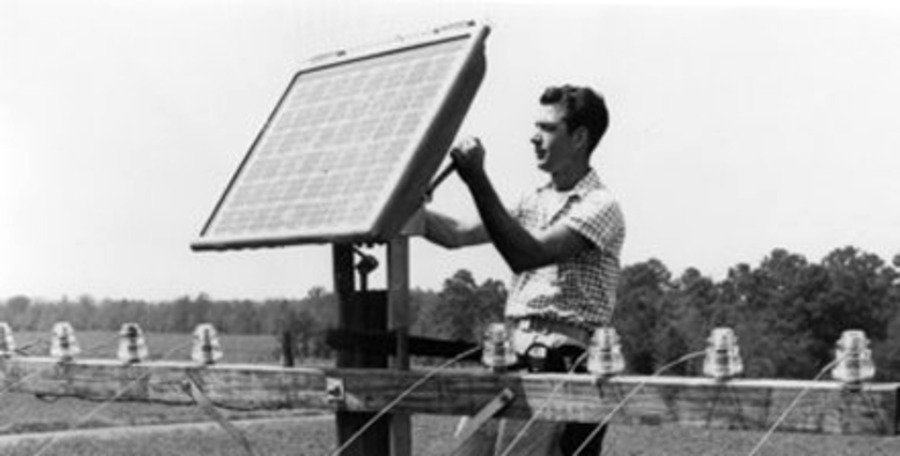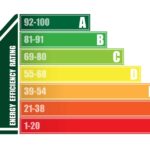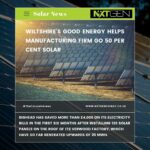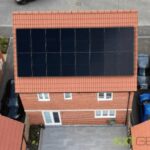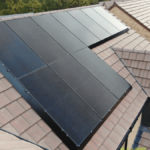Solar energy is the energy that comes from the sun that can be used for various purposes, such as heating, lighting, and electricity. Solar energy is a renewable and clean source of energy, as it does not produce greenhouse gases or pollution. Solar energy is also abundant and available in most parts of the world.
The history of solar energy dates back to ancient times, when humans used the sun’s rays to start fires, cook food, and dry crops. Throughout the centuries, different civilizations have developed ingenious ways to harness the power of the sun for their needs. From the 16th century to the present day, solar energy has undergone many breakthroughs and innovations, leading to the modern solar energy technology we use today.
Below, I’ll summarise some of the major milestones in the history of solar energy from the 16th century to present day.
Ancient Uses Of Solar Energy
The sun has been used as a source of heat since ancient times. The Ancient Egyptians built their structures in ways that allowed more light and warmth to enter. They also used the sun to tell the time and in the worship of their gods.
The Ancient Greeks and Romans also used the sun to create fire. They also used mirrors or lenses to focus the sun’s rays and ignite torches. They used these torches for their religious ceremonies and also for military purposes.
The 16th-17th Century: Development of the First Solar Cell
The 16th century marked the beginning of the development of solar energy technology, as early scientists and inventors experimented with different ways to capture and convert sunlight into heat and electricity. Some of the most notable achievements in this period were:
- In 1767, Swiss scientist Horace-Benedict de Saussure designed and built the world’s first solar collector, a device that could capture and store heat from the sun. He used a wooden box covered with glass, which he called a “hot box”. He measured the temperature inside the box and found that it could reach up to 230°F (110°C). He also discovered that dark colours absorb more heat than light colours.
- In 1839, French physicist Edmond Becquerel, at the age of 19, discovered the photovoltaic effect, which is the basis of how solar cells work. He observed that some materials produce an electric current when exposed to light. He also experimented with different metals and electrolytes to create the first rudimentary solar cell.
- In 1873, British engineer Willoughby Smith discovered that selenium, a chemical element, has photoconductive properties, meaning that its electrical resistance changes when exposed to light. This paved the way for further research on using selenium as a material for solar cells.
- In 1876, British scientists William Grylls Adams and Richard Evans Day demonstrated that selenium can generate electricity from light without heat or moving parts. They created the first solid-state solar cell, which was an improvement over Becquerel’s liquid-based solar cell.
- In 1891, American inventor Clarence Kemp patented the first commercial solar water heater, which he called the “Climax”. It was a black-painted metal tank enclosed in a wooden box with a glass cover. It could heat water up to 140°F (60°C) using sunlight.
- In 1897, American inventor Charles Fritts created the first working selenium solar cell, which had an efficiency of about 1%. He coated a thin layer of selenium with a thin layer of gold to form a junction. He also envisioned that solar cells could be used to power homes and businesses in the future.
These discoveries and inventions laid the foundation for the modern solar photovoltaic (PV) panel, which uses silicon or other semi-conductive materials to convert sunlight into electricity.
Early 20th Century: The Modernisation of Solar Energy
The 20th century witnessed the rapid development and advancement of solar energy technology, as scientists and inventors explored different ways to capture and convert sunlight into electricity and other forms of energy. Some of the remarkable achievements in this period were:
- In 1905, a young Albert Einstein, who was 26 years old at the time, published his paper titled “On a Heuristic Viewpoint Concerning the Production and Transformation of Light”, where he studied what became known as the photoelectric effect. This is the phenomenon where light can knock electrons off certain materials and create electric current. He received the Nobel Prize in Physics in 1921 for his discovery of the law of the photoelectric effect.
- In 1917, Einstein gave a theoretical foundation to photovoltaics by introducing the notion that light consists of packets (or photons) that carry electromagnetic force. He also predicted the existence of stimulated emission, which is the principle behind lasers.
- In 1954, scientists at Bell Laboratories developed the first practical photovoltaic cell, which had an efficiency of about 6%. They used silicon as the material for the solar cell, which was coated with an antireflective layer to increase its performance. They demonstrated that their solar cell could power a toy ferris wheel and a radio transmitter.
- In 1955, Western Electric began to sell commercial licenses for silicon solar cells, which were mainly used for remote applications, such as telecommunication equipment and navigation buoys. The first solar-powered telephone call was made on April 25, 1955, using a Bell System telephone powered by a Western Electric solar battery.
- In 1956, General Electric introduced the first solar-powered radio, which was able to function in the day and night. It used a rechargeable battery that was charged by a small solar panel during the day. It also had a built-in flashlight and a compass.
- In 1958, Vanguard I became the first spacecraft to be powered by solar panels. It was launched by the US Navy as part of the International Geophysical Year program. It used six silicon solar cells to power its radio transmitter. It is still orbiting the Earth today, making it the oldest artificial satellite in space.
- In 1960, Bridgestone Corporation unveiled the first solar car in London. It had a solar-panel roof and a 72-volt battery. It could run at a speed of up to 19 mph (30 km/h) and had a range of about 31 miles (50 km).
- In 1982, the first large-scale solar farm was built near Hesperia, California. It had a capacity of 1MW (megawatt) and used over 100,000 solar modules. It was called Solar One and was operated by Southern California Edison until 1999.
- In the 1990s, developments in solar energy continued, as new materials and technologies were introduced to improve the efficiency and cost-effectiveness of solar panels. Some examples are thin-film solar cells, concentrator photovoltaics, bifacial solar cells, and perovskite solar cells. Emerging global economies also began to increase their share in renewables (especially wind and solar PV) during this time.
The 2000’s: Solar Energy Goes Commercial
The 21st century has witnessed the rapid growth and expansion of solar energy, as solar power becomes more accessible, affordable, and efficient for everyone. The renewable energy sector is booming and the following decade sees ground-breaking advancements and the expansion in solar PV tech and their installations respectively. Some of the most notable achievements in this period are:
- In the early 2000s, mandatory targets for renewable energy are set across the EU, aiming to increase the share of renewables in the energy mix and reduce greenhouse gas emissions. The EU also develops a competitive internal energy market, with renewables playing an important role.
- From the 2000s to the 2010s, more capacity is added to the renewables sector than any other (and this trend is continuing!). In 2010, renewables accounted for 20% of global electricity generation, and by 2019, this share increased to 27%. Solar PV was the second-largest source of renewable electricity after hydropower.
- In 2012, the European Photovoltaic Industry Association stated that “the solar PV industry installed more than 30 gigawatts worldwide which led to the cumulative global installations to be more than 100 gigawatts.” This was equivalent to the power generation capacity of about 100 nuclear reactors.
- Solar panels become more efficient, convenient and easier to access for home and business owners. As of 2018, there were more than 1 million solar PV installations in the UK, with a total capacity of over 13 gigawatts. Solar PV was the third-largest source of renewable electricity in the UK after wind and biomass.
- During 2018, the UK generated 3.9% of its total electricity using solar power, which was enough to power over 4 million homes. The UK also set a new record for solar power generation on April 21, 2018, when solar power supplied 28.5% of the UK’s electricity demand.
- In 2019, the first offshore floating solar farm was installed in the Dutch North Sea. The project, called Oceans of Energy, aimed to demonstrate the feasibility and potential of offshore solar power, which could overcome land constraints and harness higher solar irradiance.
- By 2020, it was cheaper to build a new solar plant than it is to continue operating an existing coal plant in most countries. This showed the extent of our reliance on solar energy and its competitiveness with fossil fuels. According to BloombergNEF, the global average levelized cost of electricity (LCOE) for solar PV was $50 per megawatt-hour in 2020, compared to $109 for coal.
- By 2020, The International Energy Agency declared that “Solar is the new king of the electricity markets”. It projected that solar PV would be the main driver of renewable energy growth in the next decade, with an annual average expansion of almost 12%. It also stated that solar PV offers some of the lowest cost electricity ever seen, with LCOEs as low as $20 per megawatt-hour in some regions.
- And finally, 2021 and 2022 are set to see renewable energy accounting for 90% of new power capacity expansion globally, according to the International Renewable Energy Agency. Solar PV alone is expected to add 162 gigawatts of new capacity in 2021 and 2022, which is more than half of the total renewable capacity addition.
The Present Day: Solar Energy Goes Global
Solar energy is the energy of the present and the future, as we witness the increasing use and development of solar-powered devices, infrastructure and transport. Solar energy is not only a clean and renewable source of energy, but it is also a cost-effective and reliable one. Investments in solar parks and solar farms, both large and small, continue to take place across the globe, creating jobs, reducing carbon emissions, and enhancing energy security.
The history of solar energy shows how humans have been using the sun’s power for various purposes since ancient times, and how they have innovated and improved their methods and technologies over the centuries. The current position of solar energy is promising, as it offers some of the lowest cost electricity ever seen, and has the potential to power various applications, from homes and businesses to satellites and spacecraft.
In terms of the UK’s solar future, it looks particularly bright, as it aims to double its solar capacity by 2030. According to Solar Energy UK, the UK’s leading solar trade association, the UK has a target of reaching 40 gigawatts of solar capacity by 2030, which would provide enough electricity to power 13 million homes. This would also help the UK achieve its Net Zero goal by 2050, and reduce its dependence on imported fossil fuels.
Frequently Asked Questions about Solar Panels
The short answer is yes! Solar panels can cut almost 70% off your energy bills, and that proportion is growing as energy bills rise. No wonder solar panel installations have risen by over 45% in the last three years, and shot up by over 80% in the last year alone.
1-2 bedroom property, 8 solar panels generating about 1,800 kWh a year.
3 bedroom property, 12 solar panels generating about 2,800 kWh kWh a year.
4-5 bedroom property, 16 solar panels generating about 3,700 kWh kWh a year.
The answer depends on how much you pay for the solar panels, how much your electricity would otherwise cost, how much green energy the panels make from the sunshine you get, and whether you have solar batteries installed or not. The average payback period for solar PV systems is coming down and can now be under 10 years depending on your solar PV system and how many solar panels you have installed.
The solar industry standard for most solar panels’ lifespans is between 25 to 30 years, but with proper care and cleaning they can last much longer. Most reputable manufacturers offer production warranties for 25 years or more. The average break even point for solar panel energy savings occurs six to 10 years after installation.
Whilst there is no hard and fast rule as to how much value solar panels can add to the overall value of your property, suggestions range from 4.1% to 14% on average and they are certainly unlikely to detract from the value of your home, even if they aren’t the most attractive roof feature visually.
Latest Solar Panel Posts
- Why Leisure Centres Should Invest in Solar PanelsIn recent years, the concept of sustainability has become increasingly vital in various industries, including leisure centres. As the global focus shifts towards environmental conservation and renewable energy sources, leisure centres are recognizing the importance of investing in sustainable practices to reduce their operating costs and their carbon footprint. One such sustainable solution gaining traction… Read more: Why Leisure Centres Should Invest in Solar Panels
- School Funding – Solar for SchoolsSolar energy is revolutionizing the way educational institutions approach sustainability and energy consumption. As schools seek innovative solutions to reduce costs, educate students about renewable energy, and minimize their environmental impact, the adoption of solar power has emerged as a compelling choice. Solar For Schools, a leading initiative in the field, empowers educational institutions to… Read more: School Funding – Solar for Schools
- Homes with solar panels can sell for more than those withoutHarnessing the power of the sun to generate clean, renewable energy is not only a sustainable choice for homeowners but also a lucrative investment in the UK property market. Homes equipped with solar panels are increasingly commanding higher prices and attracting more buyers than their non-solar counterparts. In this blog post, we’ll delve into the… Read more: Homes with solar panels can sell for more than those without
- Solar Panels and EPC RatingsSolar panels have become increasingly popular as a sustainable energy solution, offering numerous benefits for both residential and commercial properties. In parallel, Energy Performance Certificate (EPC) ratings serve as indicators of a building’s energy efficiency. Understanding how solar panels can impact EPC ratings is crucial for maximizing energy savings and environmental benefits. This blog post… Read more: Solar Panels and EPC Ratings
- Is it worth buying solar panels in Basildon, Essex?☀️ Over 10,000 homes in Basildon have a solar panel system installed. ☀️ You’ll normally break even on solar panels in less than 10 years. ☀️ A 3.5kW solar panel system will cost about £7,000 on average. Solar panels are becoming more affordable and more common in the UK, with over 1.3 million households already… Read more: Is it worth buying solar panels in Basildon, Essex?
- Wiltshire’s Good Energy Partners with bigHead to Achieve 50% Solar Energy GoalWiltshire-based Good Energy has played a crucial role in helping Dorset manufacturing firm bigHead transition to utilizing solar power for 50% of its energy needs. Thanks to the collaboration between the two companies, bigHead has successfully installed 130 solar panels on the roof of its Verwood factory, resulting in significant cost savings of over £4,000… Read more: Wiltshire’s Good Energy Partners with bigHead to Achieve 50% Solar Energy Goal
- Unveiling the Perfect Fit: How Many Solar Panels Can Your Roof Handle?Harnessing the power of the sun is an attractive proposition for many UK homeowners. But before diving headfirst into solar energy, a crucial question arises: how many solar panels can fit on your roof? The answer, unfortunately, isn’t a simple one. It’s a captivating interplay between several factors, each one requiring careful consideration. Understanding Your… Read more: Unveiling the Perfect Fit: How Many Solar Panels Can Your Roof Handle?
- Powering Care with Sunshine: How Solar Panels Benefit Nursing HomesNursing homes are the backbone of our communities, providing essential care for our elderly population. But keeping these facilities running smoothly requires a significant amount of energy – lighting, heating, cooling and medical equipment all contribute to a hefty energy bill. This is where commercial solar panels come in, offering a win-win solution for both… Read more: Powering Care with Sunshine: How Solar Panels Benefit Nursing Homes
- Who are NXTGEN Energy Ltd?NXTGEN Energy Ltd are a solar energy company based in Rayleigh, Essex, UK. They specialize in the installation of solar panels, battery storage systems, and electric vehicle chargers for homes and businesses across the UK. They are MCS certified, which means they meet the Microgeneration Certification Scheme’s standards for quality and safety. This makes them… Read more: Who are NXTGEN Energy Ltd?
- Why UK Homeowners with Solar Panels Need Bird Proofing (Beyond the Basics)Imagine waking up to the quiet hum of your solar panels, generating clean energy to power your home. It’s a beautiful image, symbolizing lower electricity bills and sustainability. But what if a gang of birds decided the solar panels on your roof were the perfect spot for their new condo complex? Unfortunately, this idyllic scene… Read more: Why UK Homeowners with Solar Panels Need Bird Proofing (Beyond the Basics)
- Solar Panel FinancingAt NXTGEN, we are committed to delivering excellent service and we understand that many customers may prefer the option of paying for their solar panels with finance. So, we’ve partnered with established credit brokers, Ideal4Finance, to enable customers to spread the cost of purchase with manageable monthly payments. We can offer 3 Flexible Finance Options… Read more: Solar Panel Financing
- How AI could supercharge your solar panelsImagine stepping outside on a crisp January morning, a mug of steaming tea warming your hands. You glance at your rooftop, not with dread at energy bills, but with a mischievous grin. Why? Because the sun, that cheeky orb in the sky, is being squeezed for every juicy watt it holds thanks to your AI-powered… Read more: How AI could supercharge your solar panels

